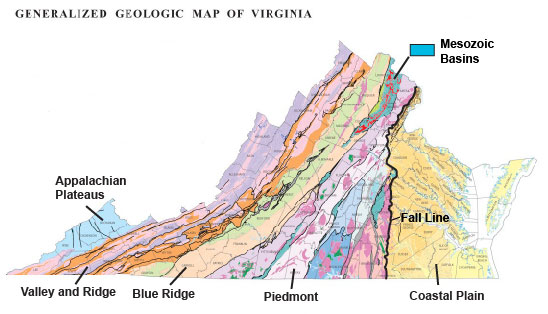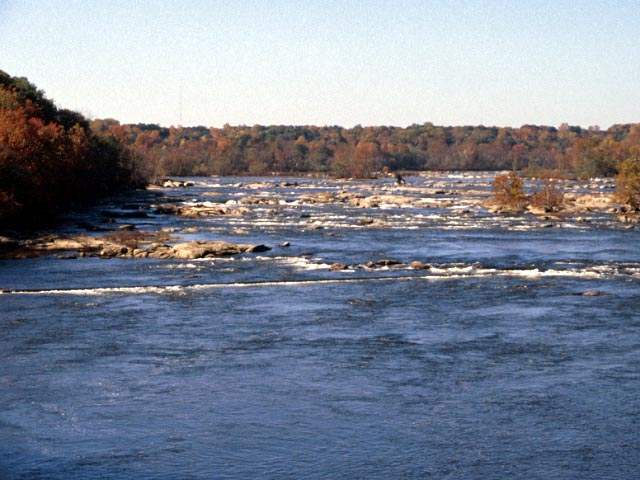
Special Physiographic Features, Part 1
Special physiographic features of Virginia's Coastal Plain include: the Fall Line, scarps and terraces, and Carolina Bays.
The Fall Line
• The Fall Line is named for a zone of falls and rapids in rivers along the Coastal Plain-Piedmont boundary. Sometimes this feature is called the Fall Zone.

Map showing the Fall Line (heavy black line) that separates the Coastal Plain from the Piedmont. (Map courtesy of the Virginia Division of Geology and Mineral Resources)

The Fall Line at Richmond, on the James River. Hard granitic rocks are exposed in these rapids. (Photograph by Robert Whisonant)
• The Fall Line is caused by the change from hard rock to soft sediment between the Piedmont and Coastal Plain provinces.

The Fall Line is caused by a change in geology from the hard crystalline rocks of the Piedmont to the softer Coastal Plain sediments.
• Upstream of the Fall Line, in the Piedmont, rivers flow across more resistant rocks like granite. These rocks do not erode easily.
• Downstream of the Fall Line, in the Coastal Plain, rivers flow across gentler slopes and softer sediments that erode more easily.